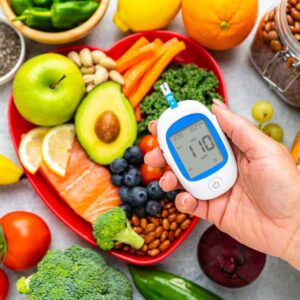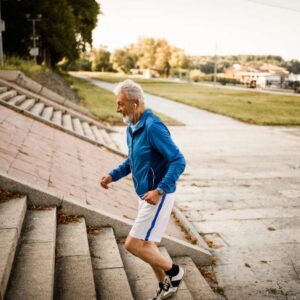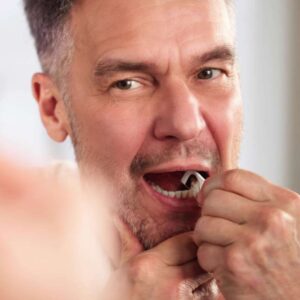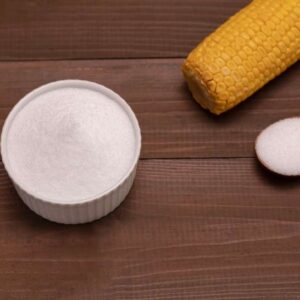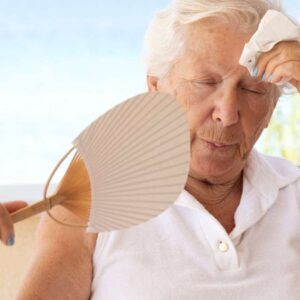
Easy Ways to Avoid Superbugs
- The “spiderbite” you never want to get
- Chances are you’ve taken this overprescribed drug at least once this year
- The one place you want to stay out of too keep superbugs away
Dear Reader,
“Hey, you work in a hospital. Does this look like a spider bite?”
“Um, I am not a nurse or doctor, but yes, that looks kind of like a spider bite — except it’s really inflamed and hot to the touch. You need to get that looked at.”
“All right, I’ll just go to the emergency room.”
This is a conversation I had with a friend of mine many years ago.
She eventually went to the ER (as she often did, which I’ll discuss later in this article) and found out that her “spider bite” was actually a staph infection.
And not just any infection — it was methicillin-resistant Staphylococcus aureus, or MRSA, the original superbug (which is often mistaken for an insect bite).
As it turns out, normal staph infections are caused by a common and typically harmless type of bacteria. Staph is so common a third of us carry staph in our noses.1
Most of the time, antibiotics can defeat a staph infection. However, MRSA strains can’t be cured by common antibiotics like methicillin or penicillin.
MRSA, like all superbugs, is the result of the overuse of antibiotics.
Because of the widespread unnecessary prescribing of antibiotics, the bacteria they are supposed to kill have mutated, rendering the drugs mostly ineffective.
However, MRSA is not a lonely superbug — the CDC lists 18 different drug-resistant organisms, and it makes sense that this list is growing. I will explain more in a bit.2
In fact, superbugs have become so rampant that every year in the U.S. alone, they infect at least 2 million people and kill over 23,000.3
But what’s most alarming, you can contract a superbug infection just about anywhere. However, there is one superbug hot spot.
We will discuss this infectious location in a bit.
First, let’s learn more about how superbugs work.
![]() Too Much of a Good Thing
Too Much of a Good Thing
Since antibiotics hit the medical mainstream in the late 1940s, they have undoubtedly saved countless lives. However, it looks like antibiotics are another unfortunate case of too much of a good thing.
And modern medicine is to blame here — it has blatantly abused and overprescribed them.
This is a dangerous practice as it’s one of the causes of antibiotic resistance.
Let me explain…
Antibiotics kill bacteria, fungi, and other germs. However, not all strains die during treatment, due to some being stronger or having genetic mutations that make them resistant to the drugs. Sometimes these germ have even evolved in a way to keep the medicines from harming them.3
During treatment, all susceptible germs will die, leaving only the surviving superbugs behind.
Once the superbug germs take over, they can even cause other bacteria to become drug-resistant as well.
This leaves you with a nasty illness and not many treatment options.
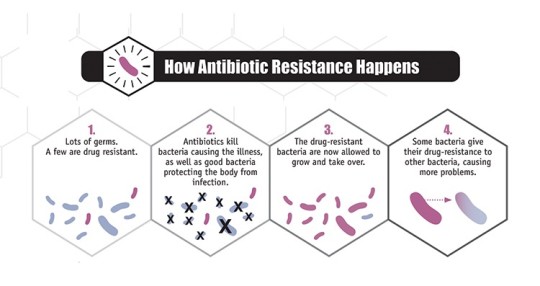
photo credit: CDC.Gov
Yet antibiotic scripts continue to fly out the hands of medical professionals at alarming and excessive rates, making them one of the most prescribed drugs in medicine.
On study found that in 2011, there were 262.5 million courses of antibiotics prescribed to Americans. This translates to prescriptions written for five in every six people in the country.4
Are we really that sick?
Jeffrey Linder, a doctor at Brigham and Women’s Hospital in Boston, doesn’t think so.
Linder is the co-author of a study published in JAMA that tracked doctors prescribing antibiotics for coughs. The study found that a very small number of people who saw a doctor for a cough actually had bacterial pneumonia, an infection treatable by antibiotics. However, 71 percent of patients with a viral cough, a condition not treatable by antibiotics, were still given a prescription for them.
Linder concluded his study saying:
Avoidance of antibiotic overuse for acute bronchitis [cough] should be a cornerstone of quality health care. Antibiotic overuse for acute bronchitis is straightforward to measure. Physicians, health systems, payers, and patients should collaborate to create more accountability and decrease antibiotic overuse.5
Unfortunately, not all physicians have such restraint when it comes to antibiotics.
Due to these prescription pad liberties, the CDC reports that antibiotics are not “optimally prescribed.”
As a result, up to 50 percent of the time, antibiotics are prescribed with incorrect dosing or wrong duration, and mostly, as Linder’s study points out, when they’re not needed.3
While there is no surefire way to avoid contracting MRSA or any superbug, there are a few places to avoid and one natural antibiotic that may be helpful.
![]() Don’t Go There
Don’t Go There
In my friend’s case, it turns out her MRSA infection came from one of two places — a lake or the hospital.
At the time, she had a job where she spent many hours a day in Florida lakes and rivers. Due to her job, she had frequent minor injuries that brought her to the emergency room a little too often.
The doctor she saw there for her MRSA explained that she likely had a small cut on her leg that became the entry point for the bacteria that she picked up either while in the lake or during one of her many trips to the ER.
However, research shows it was probably the latter.
It seems that just one trip to the ER may be enough to catch a superbug, since in one year, 85% of MRSA infections came from health care facilities.7
Avoiding the emergency room for minor illness may be one of the best ways to prevent catching a superbug. Not only are you avoiding possible contact with drug-resistant germs, but you are also reducing your chances of getting a prescription for an unnecessary antibiotic.
If you have any superbug comments you would like to share, please do! nmoore@lfb.org
Live well,

Natalie Moore
Managing editor, Living Well Daily
P.S. Antibiotics in our food supply are also a cause for drug-resistant bacteria. This is a subject we will dive into in an upcoming article. Stay tuned.
Sources
[2] Biggest Threats
[3] Antibiotic / Antimicrobial Resistance
[5] Antibiotic Prescribing for Adults With Acute Bronchitis in the United States, 1996-2010
[6] Recreational Water Illnesses (RWIs)
[7] MRSA Statistics
Written By Natalie Moore
Natalie Moore is a dedicated health researcher with a passion for finding healthy, natural, and science-based solutions. After a decade of direct healthcare experience in western and natural medicine, she was involved in public health research before joining Living Well Daily.
View More Free Articles
Stop Obsessing Over Diet Trends
Can we stop with the endless diet debates already? Every other week there’s a new headline shouting about which diet is best for weight loss, heart health, or diabetes. Paleo, keto, low-carb, high-protein… it’s exhausting. And now, a new meta-analysis is out comparing the Mediterranean diet, the DASH diet, and something called AHEI (that’s “Alternative...
A New Reason to Ditch Processed Junk
If you’ve ever walked the inside aisles of your local grocery store and thought, “This is all just junk,” your instincts were spot on. A new study published in the journal Thorax just added another red flag to the list of dangers linked to ultra-processed food—a 41 percent higher risk of lung cancer. That’s right....
When Being Winded on Stairs Is Serious (And When It Isn’t)
I had an athlete visit me recently because he experienced shortness of breath while climbing stairs. He is in great shape, so he was worried about what it might mean. “Doc,” he said, “I run five miles three times a week. Why am I huffing and puffing after two flights of stairs?” His concern is...
Study EXPOSES Hidden Danger Lurking in Your Car
We think of our homes and cars as safe havens. But according to a startling new study, they may be flooding your lungs with microscopic plastic particles—every single day. Researchers in France recently found that adults inhale an average of 68,000 microplastic particles daily from indoor air alone. To put that in perspective, that’s about...
Mailbag: Is Modern Food Making You Snore?
“What can cause snoring, and is there a way to correct this issue?” —Seeking Silence Hi Seeking, Snoring happens when the soft tissues in your throat relax and vibrate as air passes through during sleep. While several factors can cause snoring—from sleep position to nasal congestion—I want to share one trigger that might surprise you....
Simple Food Swap SLASHES Dementia Risk 28%
Let’s be honest… who would jump at the chance to cut their dementia risk by 28 percent. And no, you don’t need to run marathons, survive on broccoli, or learn to play the zither (whatever that is) to make it happen. All it takes is one easy swap—something that’s probably already in your refrigerator. Researchers...
This SMART Floss Exposes Hidden Health Danger
Scientists have created dental floss that doesn’t just clean between your teeth—it also tracks your stress while you’re flossing. Now, I know what you’re thinking… “Great—now even flossing is going to stress me out by telling me how stressed I am.” But this fascinating new tool from Tufts University could be a game-changer for understanding...
Is This "Safe" Sweetener Damaging Your Brain?
The headlines are alarming… “Popular Sugar Substitute Linked to Brain Cell Damage” and “Erythritol Could Damage Critical Brain Barrier” are just two of the dozens I’ve spotted recently. But before you toss every sugar-free product in your pantry, let’s take a closer look at what this study actually shows—and what it doesn’t. The latest research...
This Summer Threat Could SPIKE Your Blood Sugar
Picture this… It’s another scorching hot summer day. You crank up the air conditioning while watching the weather forecast, which predicts yet another “record-breaking” heat wave. It’s starting to feel like just another miserably uncomfortable summer. But what you might not realize is that—if you have diabetes—those rising temps could do far more damage to...
Move Over Yogurt—5 Foods That Pack MORE Probiotics
Let’s talk about your gut. The microbiome is the collection of trillions of bacteria and other tiny organisms that live in and on your body—especially in your gut—and help keep you healthy. I’ve written often about how vital it is to maintain a healthy microbiome. And you might have dutifully added yogurt to your shopping...
